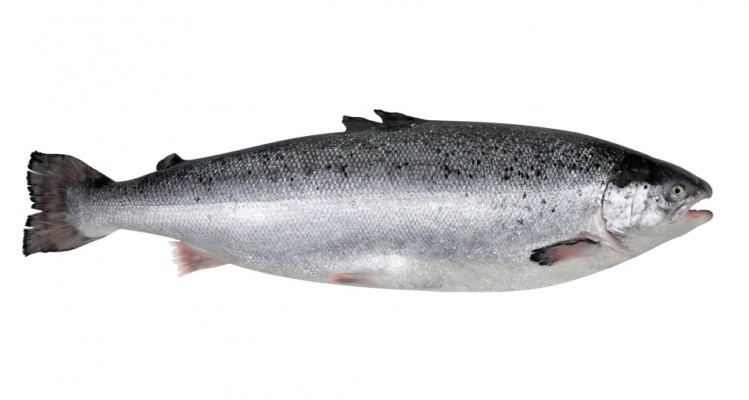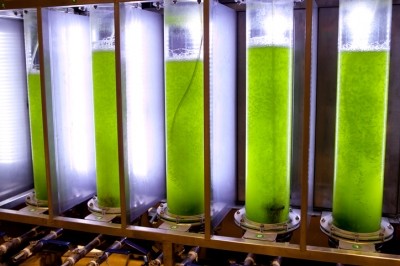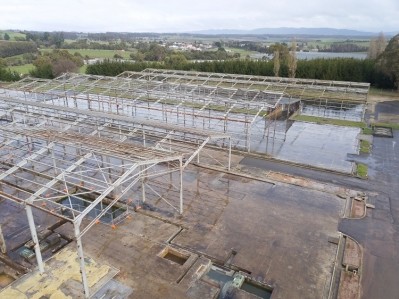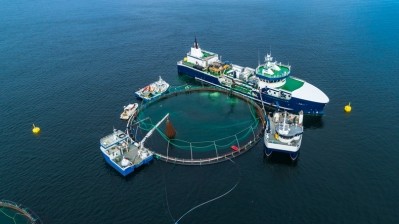You are what you eat: microalgae boosts omega-3 content of farmed salmon

Those involved in supply chain collaboration project In the Blue claim to have produced salmon with a fish-in: fish-out ratio of 0.47:1 - setting a new industry gold standard. By summer, the fish will also have a 100% higher omega-3 content than today’s industry average, they said.
The project, a joint venture and effort between aquaculture producer Kvarøy, importer Blue Circle Foods, feed company BioMar and retailer Whole Foods Market, launched in 2016 with ambitions for creating a model of more sustainable aquaculture for the farmed salmon industry. The first 10,000 tons of salmon brought to market under the project were the first farmed salmon to have a fish-in:fish-out ratio of less than 1:1.
Continual improvements by BioMar’ to its feed recipe have further driven this ratio down to 0.47:1, an achievement that Vidar Gundersen, BioMar’s global sustainability director, said had “surpassed expectations”.
“Since we embarked on the project, we have continually improved the feed recipe, with the aim of making it more innovative, more sustainable,” he told FeedNavigator.
Originally, In The Blue feed was produced solely from trimmings from wild-caught fish already bound for human-consumption. These trimmings are then pressed into oil that is cleaned to reduce environmental contaminants like dioxins and PCBs (polychlorinated biphenyls).
Move to microalgae
The main change has been to incorporate microalgae into the feed, for reasons explained by Gundersen: “We wanted to introduce a new feed ingredient to reduce reliance on wild fish stocks. Fish oil is a limited resource and as such, is vulnerable to price fluctuations. In the first year of the project we saw how much it fluctuated in response to catch uncertainties, resulting in price hikes of 100% or more.”
He said that another reason for replacing some of the fish oil content with micro-algae oil was that it was cleaner as regards environmental contaminants.
“We clean the fish oil ingredients as much as possible but cannot completely get rid of contaminants. The end product is only as good as the raw material going into the process, so the cleaner the oil when it goes in, the better the end result will be,” he said.
The use of microalgae oil has also contributed to an increased omega-3 content versus conventionally farmed salmon.
Recent studies have found that levels of omega-3s in farmed salmon have halved over the past five years.
Gundersen said that In the Blue had gone some way to “restoring levels of omega-3” and that there was “no reason not to get omega-3 back to where it was through the use of micro-algae”.
Restoring salmon to its former glory
“That is the natural next step - to get omega-3 back up to where it should be. Then we will be delivering on consumer expectations in terms of health and nutrition.”
Another change to the feed has been to use more trimmings in the production of fishmeal, a move that has contributed to the low fish-in:fish-out ratio and enabled Kvarøy to become a net provider of protein.
“When we started the project we were only using trimmings on the oil side,” said Gundersen.
At present, In the Blue feed is just being supplied to Kvarøy for the fish it farms for Blue Circle Foods. However, Gundersen confirmed that Kvarøy was “in talks” with a view to expanding the collaboration. “Things will happen,” he hinted.
He said that ultimately, he believed there was “big potential” for this sustainable approach to salmon farming.
“This is just the beginning of a drive towards more sustainable and consumer-targeted products in the seafood category. Consumers are actually starting to differentiate on the health and nutrition profile of fish. We are what we eat, and so are the fish. And that comes down to their feed.”












